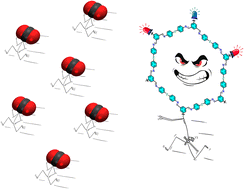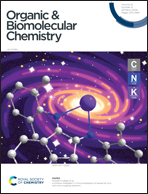POPs to COFs by post-modification: CO2 chemisorption and dissolution†
Abstract
Porous organic polymers (POPs) and covalent organic frameworks (COFs) are hierarchical nano materials with variable applications. To our knowledge, this is the first report of a post-modified, non-renewable, DMSO-soluble M-POP/1,8-diazabicyclo[5.4.0]undec-7-ene (DBU) upon atmospheric H2O/CO2 trapping after 48 h, forming a DBUH+·HCO3− adduct, as verified by solution carbon-13 nuclear magnetic resonance (13C NMR) spectroscopy. The success of the post-modification resulting from aldehyde enriched POPs was proven spectroscopically. The accessible functional group was reacted with excess monoethanolamine (MEA) resulting in the formation of M-POP. Away from CO2 physisorption, only few examples have been reported on the chemisorption process. One such example is the ethylene diamine-functionalized E-COF, capable of capturing CO2via carbamation. This was evidenced by several qualitative measurements including colorimetry and conductivity, which showed an unprecedented water solubility for a 2D COF material. The crystallinity of COFs as a result of post-modification was proven by powder X-ray diffraction (PXRD).



 Please wait while we load your content...
Please wait while we load your content...